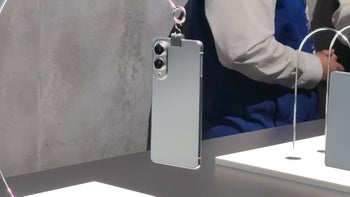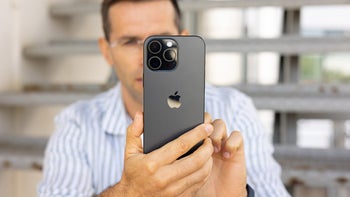By 2017, Android could hit 1 billion devices shipped annually, Windows Phone with 400% growth

Canalys is a market research firm that is always making predictions about the mobile ecosystem, and the firm is usually one of the better ones about getting things right, or at least close enough. And, in its newest report, Canalys is predicting some huge numbers for Android, and big time growth for Windows Phone by 2017.
According to the newest report, Android and Windows Phone are primed to be the big winners over the next 4 years. If the numbers turn out, Windows Phone could see growth of about 400%, pushing its market share from just 2.4% in 2012 to 12.7% in 2017. Of course, the big winner will continue to be Android, which is expected to lose just 0.6% of its market share, and still control 67.1% of worldwide smartphone shipments. But, by 2017, 67.1% of worldwide smartphone shipments will add up to a crazy 1 billion devices shipped, which is more that double the 470 million Android phones shipped last year.
Oh yeah, and that's another thing, we're just talking smartphones in this report. It's not even counting tablets which are also expected to explode over the next few years, with Android and Windows again taking a big chunk of that market.
Canalys isn't as bullish on Apple, BlackBerry, or the upstarts like Ubuntu Touch, Firefox, Jolla, or Tizen. BlackBerry is expected to basically hold steady. Apple is expected to drop from 19.5% of shipments to 14.1%, and the "Other" category is also supposed to drop to just 1.5%. If the numbers bear out, it looks to be about what we've been expecting with Android leading the way and iOS and Windows Phone rounding out the triumvirate.
Over 1 billion Android-based smart phones to ship in 2017
- 1.5 billion total smart phones to ship, accounting for 73% of all mobile phone shipments
Shanghai, Palo Alto, Singapore and Reading – Tuesday, 4 June 2013
Worldwide, 1.5 billion smart phones will ship in 2017, according to the latest country level forecasts from Canalys, to account for 73% of all mobile phone shipments. In North America and Western Europe, virtually all phones shipped will be smart phones. Even in Greater China, smart phones will represent 95% of all mobile phone shipments in 2017.
‘The price of smart phones has fallen dramatically over the last few years and this has helped increase penetration,’ said Chris Jones, Canalys Principal Analyst. ‘But, so far, the problem with low-cost smart phones has been that the user experience has been compromised to hit lower price points. This is why Nokia has been so successful with its Asha portfolio. These handsets have been purpose-built and provide a great “pseudo-smart phone” experience. But the situation will change over the next few years. As component prices continue to fall, vendors will be able to deliver great experiences on smart phones at low price points, which means that in many markets, feature phones will become extinct.’
The smart phone market will grow at a compound annual growth rate (CAGR) of 18%, while mobile phone shipments will decline by a CAGR of 9% over the same period. Growth in the smart phone market will continue to be driven by Android. In 2012, over 470 million Android-based smart phones shipped and by 2017 this number will have more than doubled to over 1 billion, giving the platform a 67.1% market share. Over the same period, it is forecast that Apple’s shipments will continue to grow, but at a slower rate than the total smart phone market and hence its market share will fall from 19.5% in 2012 to 14.1% in 2017. ‘Apple’s growth will be curtailed by the fact that momentum in the smart phone market is coming from the low end, and Apple is absent from this segment,’ said Jessica Kwee, Canalys Analyst. ‘Android’s continued dominance is due to the scalability of the platform.’
In contrast to Apple, Microsoft’s market share is forecast to grow from 2.4% to 12.7% over the same period. ‘The scalability of Microsoft’s platform will be critical to its success and it has made progress here by enabling Huawei and Nokia to deliver Windows Phone products at aggressive price points,’ said Kwee. ‘Nokia is the most active vendor in the Microsoft camp and it continues to make steady progress with its Lumia portfolio. It has had some major carrier wins recently in the two largest markets of China and the US, which will help it build momentum in the short term. But longer-term it is the Chinese vendors that are best placed to challenge Samsung’s market dominance. Microsoft already has a relationship with Huawei and ZTE in the phone space, and Lenovo is a major partner in the PC space. These partners will be needed to help deliver the scale that Microsoft needs.’
The outlook for BlackBerry remains positive. Though its market share will remain stable over the forecast period, in real terms its shipments are expected to more than double. But for this to happen, it needs to phase out BlackBerry 7 devices quickly and add BlackBerry 10 devices across a range of price points. In addition, BlackBerry needs to urgently reverse its fortunes in the US and focus on growing its presence in China, as without these markets it will struggle to hit the projected shipment numbers.
- 1.5 billion total smart phones to ship, accounting for 73% of all mobile phone shipments
Shanghai, Palo Alto, Singapore and Reading – Tuesday, 4 June 2013
Worldwide, 1.5 billion smart phones will ship in 2017, according to the latest country level forecasts from Canalys, to account for 73% of all mobile phone shipments. In North America and Western Europe, virtually all phones shipped will be smart phones. Even in Greater China, smart phones will represent 95% of all mobile phone shipments in 2017.
‘The price of smart phones has fallen dramatically over the last few years and this has helped increase penetration,’ said Chris Jones, Canalys Principal Analyst. ‘But, so far, the problem with low-cost smart phones has been that the user experience has been compromised to hit lower price points. This is why Nokia has been so successful with its Asha portfolio. These handsets have been purpose-built and provide a great “pseudo-smart phone” experience. But the situation will change over the next few years. As component prices continue to fall, vendors will be able to deliver great experiences on smart phones at low price points, which means that in many markets, feature phones will become extinct.’
The smart phone market will grow at a compound annual growth rate (CAGR) of 18%, while mobile phone shipments will decline by a CAGR of 9% over the same period. Growth in the smart phone market will continue to be driven by Android. In 2012, over 470 million Android-based smart phones shipped and by 2017 this number will have more than doubled to over 1 billion, giving the platform a 67.1% market share. Over the same period, it is forecast that Apple’s shipments will continue to grow, but at a slower rate than the total smart phone market and hence its market share will fall from 19.5% in 2012 to 14.1% in 2017. ‘Apple’s growth will be curtailed by the fact that momentum in the smart phone market is coming from the low end, and Apple is absent from this segment,’ said Jessica Kwee, Canalys Analyst. ‘Android’s continued dominance is due to the scalability of the platform.’
In contrast to Apple, Microsoft’s market share is forecast to grow from 2.4% to 12.7% over the same period. ‘The scalability of Microsoft’s platform will be critical to its success and it has made progress here by enabling Huawei and Nokia to deliver Windows Phone products at aggressive price points,’ said Kwee. ‘Nokia is the most active vendor in the Microsoft camp and it continues to make steady progress with its Lumia portfolio. It has had some major carrier wins recently in the two largest markets of China and the US, which will help it build momentum in the short term. But longer-term it is the Chinese vendors that are best placed to challenge Samsung’s market dominance. Microsoft already has a relationship with Huawei and ZTE in the phone space, and Lenovo is a major partner in the PC space. These partners will be needed to help deliver the scale that Microsoft needs.’
The outlook for BlackBerry remains positive. Though its market share will remain stable over the forecast period, in real terms its shipments are expected to more than double. But for this to happen, it needs to phase out BlackBerry 7 devices quickly and add BlackBerry 10 devices across a range of price points. In addition, BlackBerry needs to urgently reverse its fortunes in the US and focus on growing its presence in China, as without these markets it will struggle to hit the projected shipment numbers.













Things that are NOT allowed: